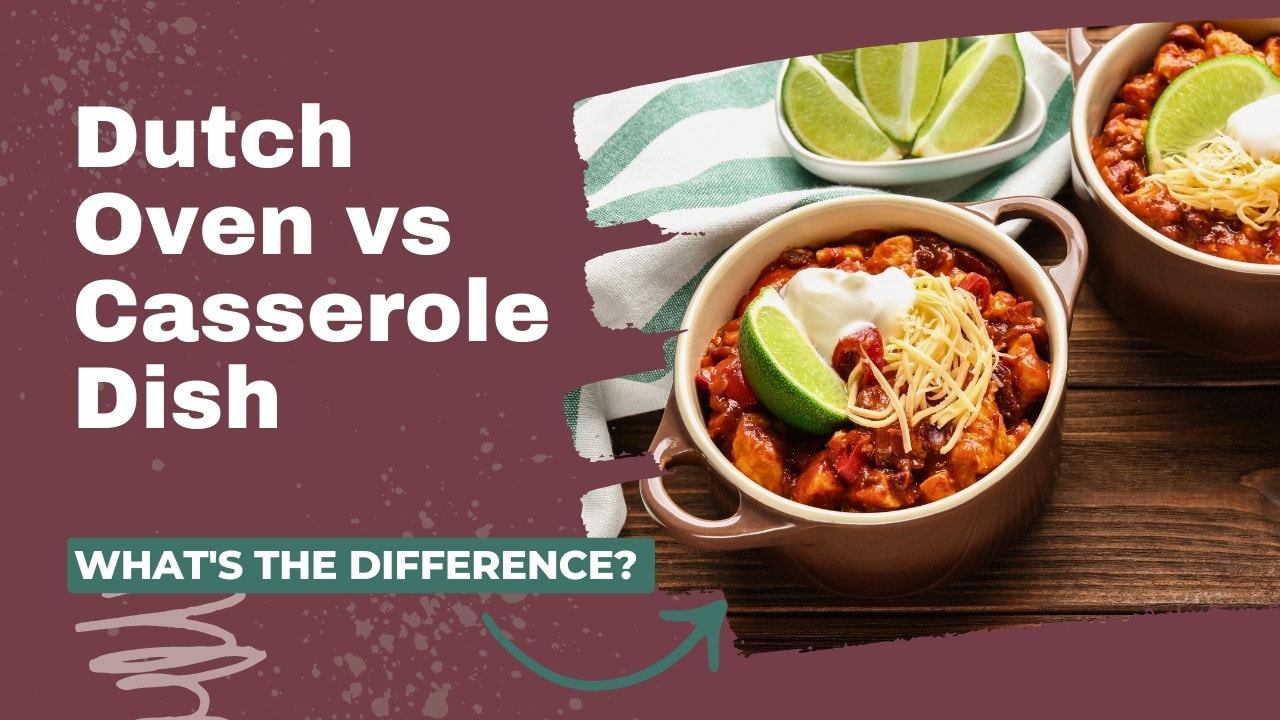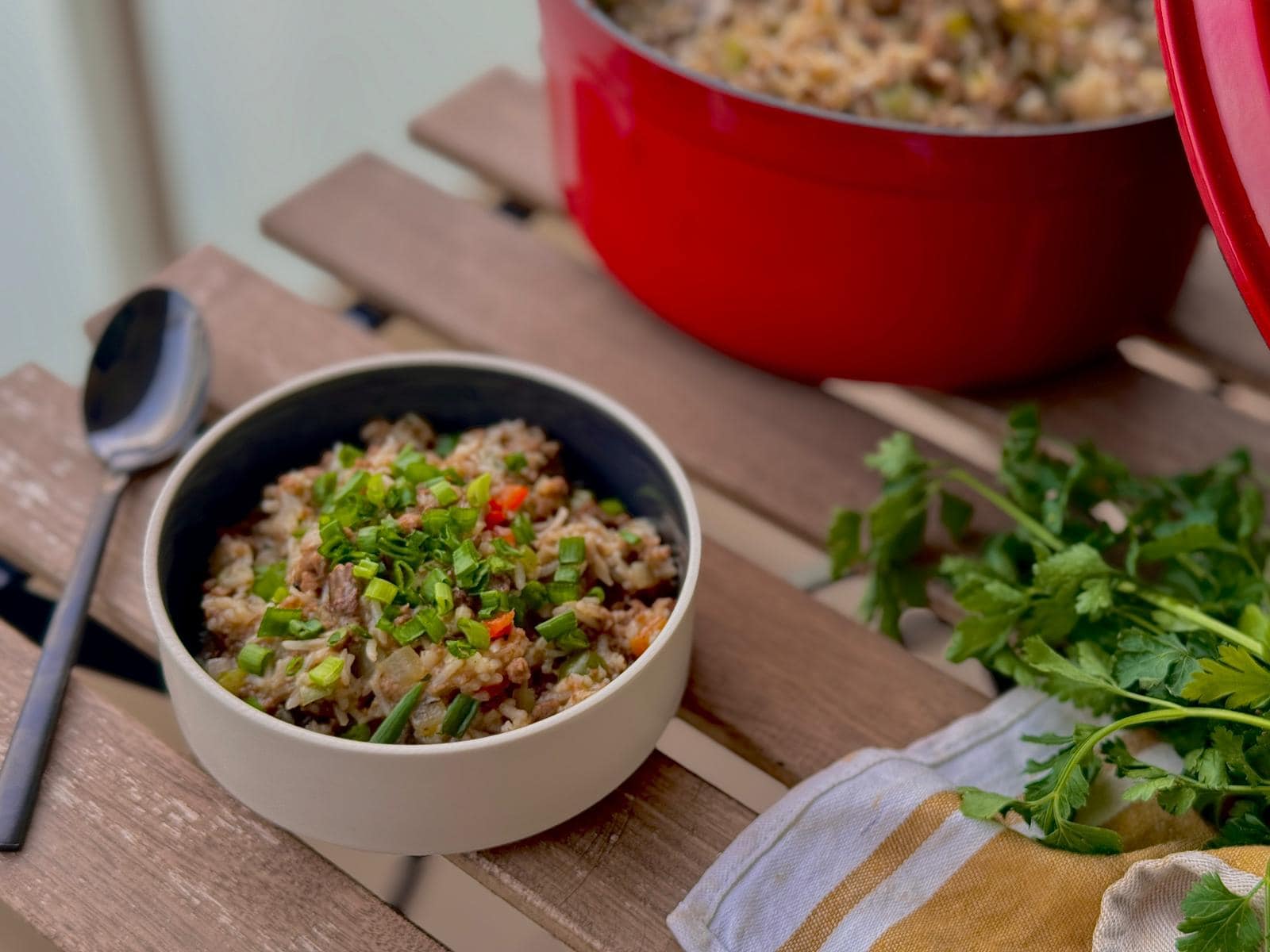I often get asked these questions. How is a Dutch oven different from a Casserole dish? Can I substitute one for the other in a recipe?
While these versatile and durable pots may have a lot in common, there are several differences between the two that may surprise you.
In this article, I’ll do a little run-through of all the differences and how to decide which one is right for you!
What’s the Difference Between a Casserole Dish and a Dutch Oven?
A casserole dish is typically made of glass or ceramic and can be used for baking layered dishes in the oven. However, it usually isn’t compatible with a stovetop, unless you get a flameproof one.
A Dutch oven is usually made of natural or enameled cast iron and comes with a tight lid. It can be used on both stovetops and in the oven for a variety of cooking methods, including braising, stewing, and baking.
Here’s a rundown of the differences between a Dutch oven and a casserole dish.
| Dutch oven | Casserole dish | |
|---|---|---|
| Material | Raw and enameled cast iron Stainless Steel Ceramic | Glass Stoneware Ceramic |
| Size | Larger (up to 13 qt) | Smaller (2-3.5 qt) |
| Common Uses | ✅ Low and slow cooking. ✅ Browning. ✅ Braising. ✅ Frying. ✅ Searing. ✅ Baking. ✅ Stewing. | ✅ Baking. ✅ Roasting. ✅ Steaming. ✅ Stewing. |
| Shape | Higher sides Thicker walls | Shallower Wider |
| Heat Tolerance | High (500 – 900°F). Stove or oven. | Low (350 – 500°F). Oven use only. |
Where Did These Terms Come From?
The way we use the terms “Dutch oven” and “casserole dish” today isn’t how they were always used throughout history – or necessarily how they are used in other parts of the world.
The pots we refer to as “Dutch ovens” are made of heavy-duty materials like cast iron, often featuring an enameled coating to prevent sticking and make food transfer easier. While this sturdy pot is a favorite among chefs and home cooks today for its versatility and heat retention, the history of this cookware dates back to the 17th century.
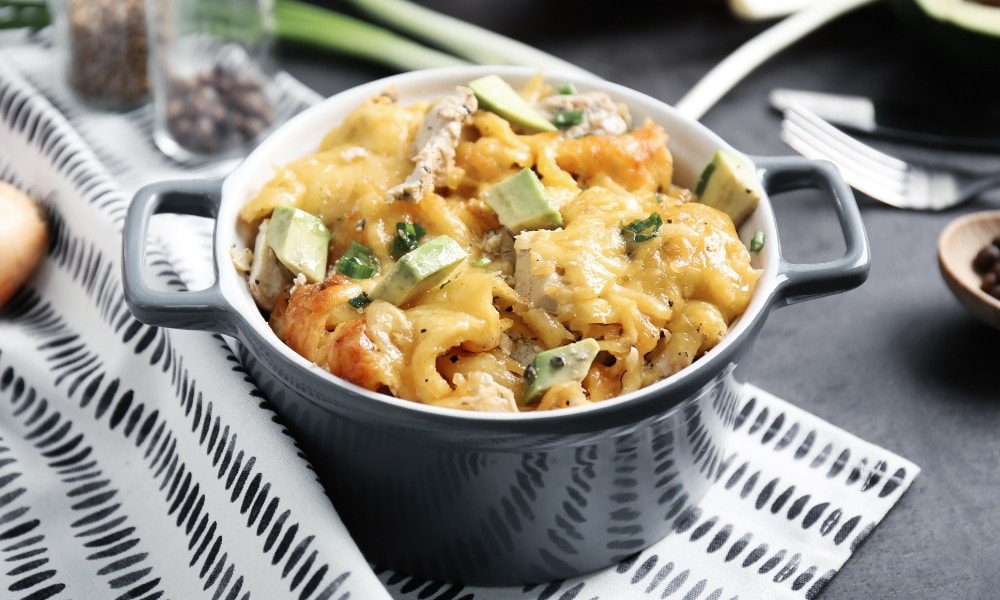
Back then, the Dutch used to call it “braadpan“, which means roasting pan, and “sudderpan,” which is more about simmering. However, the story is that when an Englishman named Abraham Darby visited the Netherlands, he observed the cookware and took the idea back to England, improving the casting process. And he named it the “Dutch oven,” paying homage to its origin.
When Le Creuset began enameling Dutch ovens, they renamed them “French ovens” for the English-speaking markets. But in France, these vessels are called La Cocotte – which means “casserole.” –And this is where the confusion lies.
In current American English, “casserole” refers to both the type of cookware and the food cooked within it. Traditionally, a casserole dish is shallower and flatter than a Dutch oven, and it’s usually made of materials like ceramic, stoneware, or glass.
The French “cocotte” or “casserole” means simply a cooking pot. However, in English, “cocotte” means something a bit fancier, like an enameled Dutch oven or a French oven.
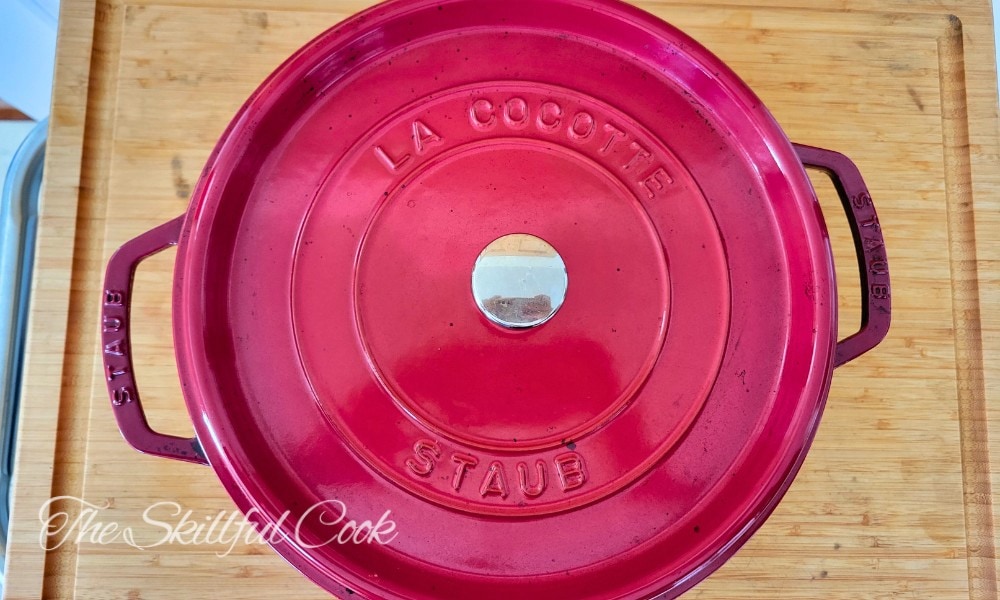
Casserole Dish vs a Dutch Oven — The Differences
Both casserole dishes and Dutch ovens have unique qualities and uses, making them indispensable for any home chef. Let’s see how they stack up against each other:
Material
Commonly made from glass, ceramic, or stoneware, casserole dishes are the go-tos for baking anything from your bubbling mac ‘n’ cheese to a lasagna. These materials are non-reactive, so you don’t have to worry about your food developing a metallic taste.
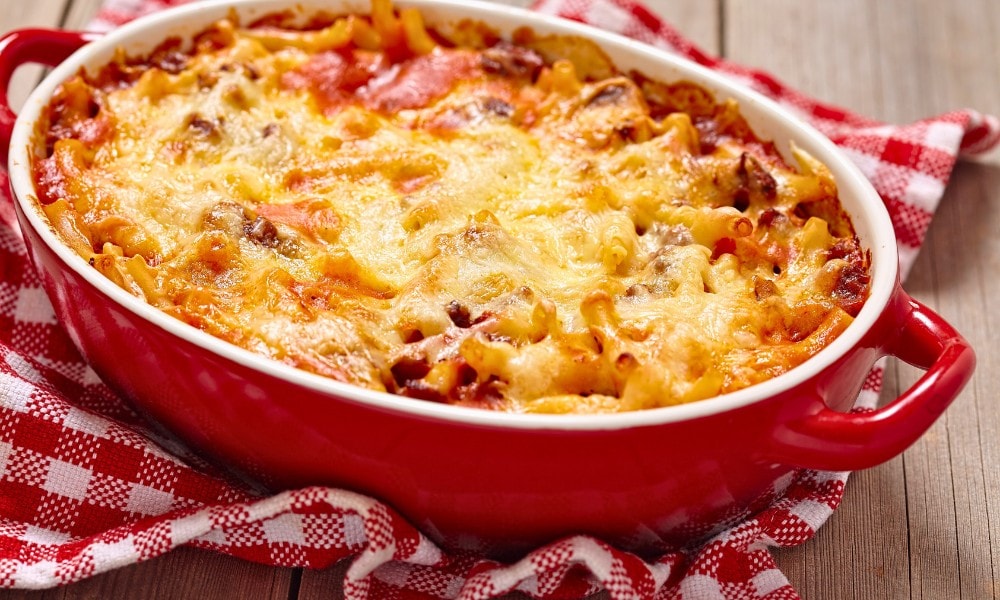
Dutch ovens typically have a natural or enameled cast iron construction, offering even heat retention and distribution. They can also be made of stainless steel or even aluminum with a nonstick coating.
I like to use a Dutch oven to minimize the risk of hot spots or undercooked food, especially when making a braised lamb shank.
Heat Tolerance
The heat limits of a casserole dish can vary depending on the material, but commonly, they’re safe to use in an oven set anywhere between 350 and 500 degrees Fahrenheit. This limits them to recipes that require cooking at moderate temperatures.
Depending on their materials, Dutch ovens have a high heat tolerance, ranging from 500 degrees to even 900 degrees Fahrenheit for some pure cast iron versions.
Size
Generally, casserole dishes are lighter than Dutch ovens, with most weighing only a few pounds. This makes them easier to handle.
However, what you gain in lightweight convenience, you might sacrifice in heat retention compared to the more robust Dutch oven. Dutch ovens are available in a variety of sizes, from two-quarts right up to thirteen-quarts. They can weigh 15 pounds or more when empty!
Shape-wise, a Dutch oven typically has higher sides and a thicker bottom, while a casserole dish tends to be shallower and wider. Dutch ovens also often have a tight-fitting lid.
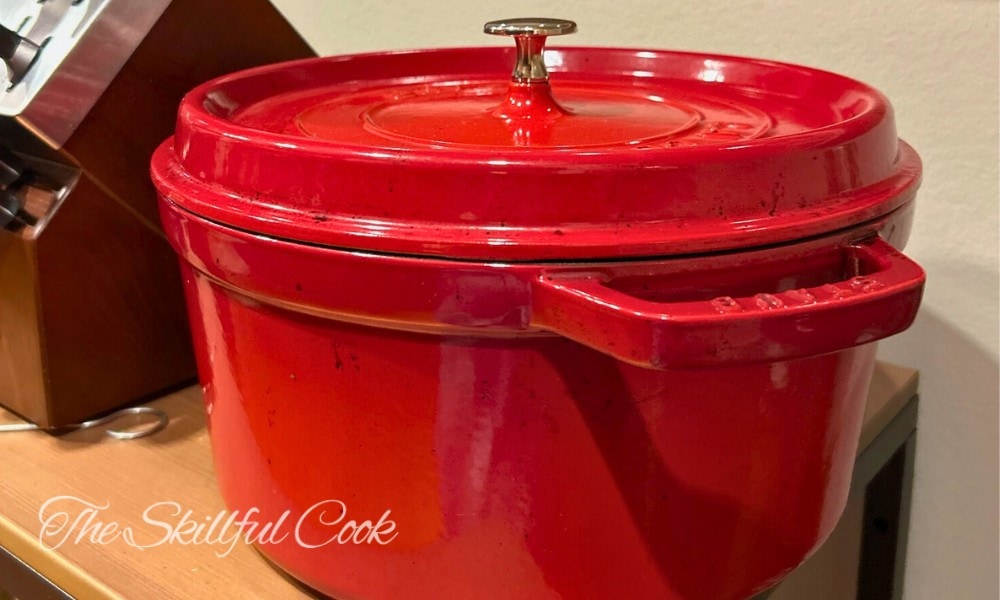
You may notice that some Dutch ovens come with flat lids, while others come with domed lids. Both shapes are designed to create a sealed environment conducive to slow cooking and even heat distribution.
Casserole dishes may come with glass lids.
Versatility
Unlike casserole dishes that are often restricted to oven-based or baked meals, Dutch ovens are the epitome of versatility.
From classic beef gravy and one-pot meals to deep-frying chicken and baking no-knead bread, a Dutch oven like the Lodge Enameled Dutch oven can be used for several culinary creations.
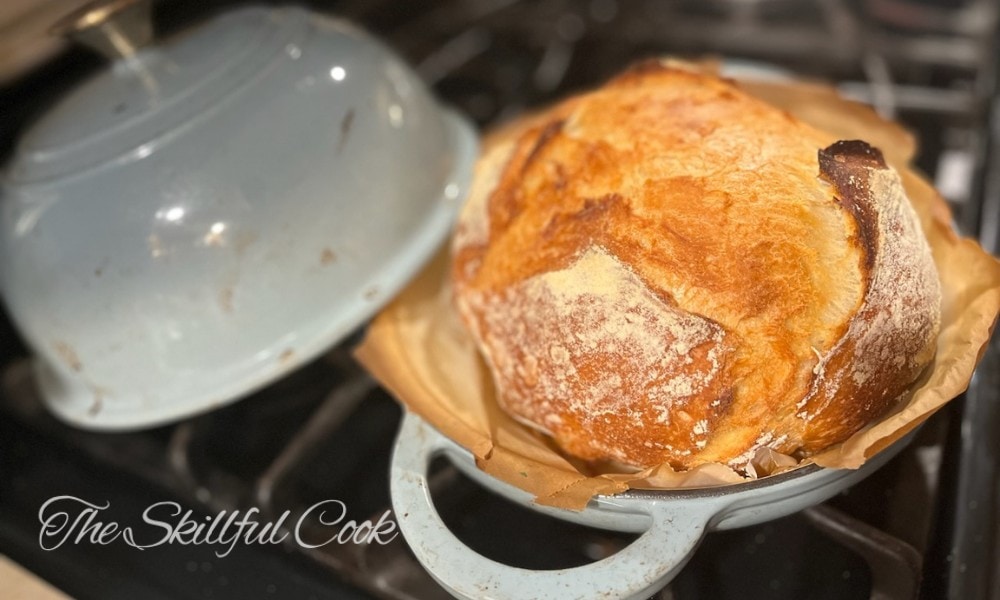
Dutch Oven to Casserole Dish Recipe Conversions
I admit, a Dutch oven is absolutely versatile, especially for one-pot meals. But if you only have a stoneware or glass casserole dish, you can still make several culinary delights that are every bit as delicious. You will have to make a few adjustments though.
Temperature and Time
When transitioning a recipe from a Dutch oven to a casserole dish, start by reducing the cooking temperature by about 25 degrees Fahrenheit. This helps compensate for the thinner walls and lids of most casserole dishes as compared to Dutch ovens.
For instance, if you’re making braised beef short ribs, you may slow-cook them at 325 degrees Fahrenheit with the lid on for about 2.5 hours or until tender. In the case of a casserole dish, you can cook at 300 degrees Fahrenheit – but make sure to check the doneness at the 2-hour mark since casserole dishes are typically wider and shallower than Dutch ovens and might conduct heat differently – especially if used without a lid.
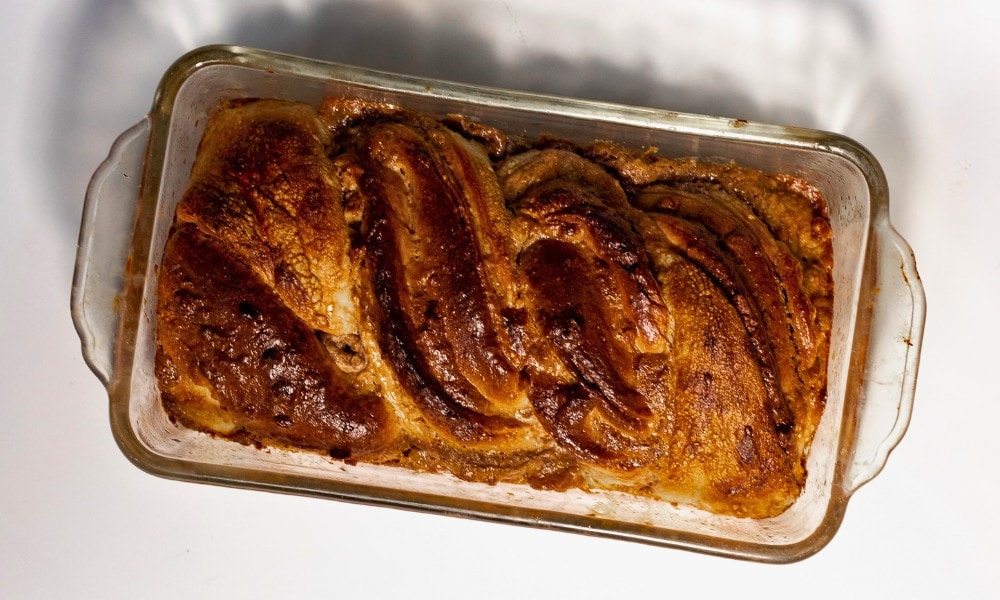
When baking bread in a casserole dish, bake at 450 degrees Fahrenheit for 30 minutes. If using foil as a lid, gently arch it to provide space for the bread to expand. For that final crusty finish, I like to remove the foil in the last 15-20 minutes of baking. If your casserole dish isn’t rated for such high heat, set it at a lower temperature but extend the baking time slightly.
Liquid Quantity
Dutch ovens are meant to braise food in liquid. Casserole dishes release more liquid if they don’t have lids. But if you don’t want to braise the food, you may need to reduce the amount of liquid in your recipe when using a casserole dish to prevent it from becoming too soupy.
Covering
Dutch ovens usually come with tight-fitting lids, while many casserole dishes may not have lids. If your casserole dish comes with a lid, you’re all set; if not, aluminum foil can usually do the trick.
Dish Size and Material
To ensure an even cook, you will need to find a casserole dish of a similar size to the Dutch oven the recipe asks for. For me, an 8×8 or 13×9-inch casserole dish works well to bake almost anything that calls for a Dutch oven.
If you’re planning to use your casserole dish on a stovetop, make sure it’s compatible. For instance, cast iron casseroles can be used on stovetops, while glass or ceramic ones should only be used in the oven.
How to Convert a Casserole Dish Recipe to a Dutch Oven
When it comes to a casserole dish vs a Dutch oven, it all really boils down to the lid. All Dutch ovens sport a snug, heavy lid to retain moisture.
If your recipe doesn’t require a lid – such as lasagna – you may leave it off to achieve a crispier topping. Just be careful as the cast iron’s enhanced heat capability can lead to quicker browning and potentially result in an uneven cook.
Since most casserole dishes are almost always non-stick, if you’re using a natural cast iron Dutch oven, consider seasoning it with oil or butter before adding layers of ingredients.
Also, make sure the casserole dish you’re using is oven-safe, as Dutch ovens are typically designed to withstand higher temperatures.
Frequently Asked Questions
Can a casserole dish go in the oven?
Yes, absolutely! Casserole dishes are typically designed to be oven-safe, so you can use them for baking casseroles, lasagnas, and other oven-baked dishes. Just make sure to check the manufacturer’s instructions for any specific temperature limits. Also, make sure the lid is oven-safe.
For instance, the Staub cast iron cocotte can withstand up to 900 degrees Fahrenheit, while the Lodge enameled cast iron dish is generally safe up to 500 degrees Fahrenheit.
What’s the difference between a Le Creuset casserole and a French oven?
A French oven (also known as a cocotte) is a modern take on the Dutch Oven; it’s made in France from enameled cast iron that can be used on the stovetop or in the regular oven. French ovens have higher sides; about 3-4” in length. A Le Creuset casserole is a shallower dish, designed primarily for baking. Le Creuset casseroles may be made of enameled cast iron or stoneware.
What’s the difference between a casserole and a cocotte?
The primary difference between a casserole and a cocotte is the material used in their construction. Casserole dishes are crafted from glass, ceramic, or porcelain while cocottes (aka French ovens) are made from enameled cast iron.
Thanks to their heavy build and efficient heat distribution, you can use cocotte for slow cooking (think pot roast or Chinese-style ribs) and making foods that require a lot of steam, like rice dishes or bread.
Can you use a glass Pyrex dish with a lid instead of a Dutch oven?
Yes, a lidded glass Pyrex dish can be used as a Dutch oven alternative for certain recipes, such as baking bread or casseroles.
However, it may not be suitable for high-heat cooking. Pyrex glass dishes have a lower heat tolerance and may break or crack if exposed to sudden temperature changes.
The Takeaway
When it comes to choosing between a Dutch oven and a casserole dish, it all comes down to your specific cooking needs. If you’re looking for cookware that can be used for cooking, braising, simmering, poaching, and baking, you can’t go wrong with a Dutch oven
However, for bake-centric dishes like scalloped potatoes, crab cakes and gooey mac and cheese, a casserole dish might be a better choice.
Do you have a Dutch oven? Have you ever substituted it for a casserole dish? Please share your thoughts below. We would love to hear of your cooking successes or failures — no judgment here!

